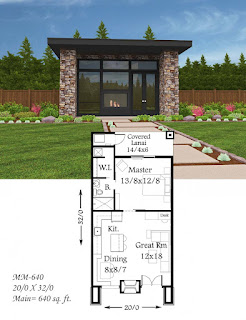Innovative Furniture Plans for Modern Homes
The modern home demands furniture that is not merely functional, but also aesthetically pleasing, adaptable, and reflective of contemporary design principles. This necessitates a move beyond traditional furniture plans towards innovative designs that maximize space, integrate technology, and embrace sustainable materials. This article explores several key areas of innovative furniture design for the modern home, examining both established trends and emerging possibilities.
Space-Saving Solutions for Compact Living
In urban environments and smaller homes, space optimization is paramount. Innovative furniture plans directly address this challenge by incorporating clever design features to maximize functionality within a limited footprint.
Multifunctional Furniture: Transforming Spaces
The concept of multifunctional furniture has gained significant traction in modern home design. Transforming furniture pieces, such as sofa beds, Murphy beds, and convertible coffee tables, are no longer mere space-saving solutions; they are stylish and integrated components of modern interiors. These designs leverage clever mechanisms and hidden storage compartments to transition seamlessly between different functions, allowing for adaptable living spaces that respond to changing needs. For instance, a coffee table that unfolds to reveal a dining table for impromptu gatherings offers both convenience and aesthetic appeal.
Modular Furniture Systems: Adaptability and Customization
Modular furniture systems represent another significant advancement in space-saving design. These systems consist of individual units that can be arranged and rearranged to suit the user's specific needs and preferences. Whether it's a shelving unit that can be configured to fit a corner space or a seating arrangement that can be easily expanded to accommodate guests, modularity offers unparalleled adaptability. The ability to customize the furniture configuration allows homeowners to create truly personalized living spaces that evolve with their changing requirements.
Embracing Sustainable and Eco-Friendly Materials
Modern consciousness increasingly prioritizes sustainability and eco-friendly practices, and this ethos extends to furniture selection and design. Innovative furniture plans are incorporating sustainable and recycled materials, reflecting a shift towards environmentally responsible manufacturing processes.
Recycled and Repurposed Materials: Reducing Environmental Impact
The utilization of recycled and repurposed materials is a key aspect of eco-conscious furniture design. This involves creatively using reclaimed wood, recycled plastics, and other waste materials to create unique and durable furniture pieces. This approach not only reduces environmental impact but also adds a distinct character and sustainability narrative to the design. Using reclaimed wood, for instance, gives each piece a unique story and texture, enhancing its aesthetic appeal.
Sustainable Wood Sourcing and Certifications: Ensuring Responsible Forestry
For furniture that incorporates wood, responsible sourcing is crucial. Innovative plans prioritize the use of sustainably harvested wood, certified by organizations such as the Forest Stewardship Council (FSC). This ensures that the wood used comes from forests managed responsibly, minimizing deforestation and promoting biodiversity. Transparency in sourcing and certifications builds trust with consumers concerned about the environmental impact of their purchases.
Bio-Based Materials: Exploring Alternative Options
The exploration of bio-based materials, such as bamboo, rattan, and other rapidly renewable resources, offers promising alternatives to traditional materials with significant environmental advantages. Bamboo, for example, is a highly sustainable material known for its strength, durability, and rapid growth rate. Integrating these materials into furniture design creates pieces that are both aesthetically pleasing and environmentally responsible.
Integrating Technology and Smart Functionality
The convergence of furniture design and technology is creating innovative pieces that seamlessly integrate smart functionalities into the home environment. These technological integrations enhance convenience, improve organization, and contribute to a more connected living experience.
Smart Storage Solutions: Organized and Accessible
Innovative storage solutions are incorporating smart features to improve organization and accessibility. Smart cabinets and drawers might include integrated sensors for inventory management, automatically illuminating their contents, or even offering voice-activated access. This level of integration simplifies daily routines and enhances the overall efficiency of the home space.
Integrated Charging Stations: Convenient Power Management
The increasing reliance on portable electronic devices necessitates convenient charging solutions. Innovative furniture designs integrate charging stations directly into the furniture itself, eliminating the need for scattered power outlets and cables. This creates a cleaner and more aesthetically pleasing environment while enhancing convenience. Side tables with integrated wireless charging pads or desks with built-in power strips exemplify this trend.
Interactive Furniture: Enhancing User Experience
Beyond simple charging and storage, some innovative furniture designs are exploring more interactive functionalities. This could involve tables with integrated touchscreens for gaming or collaborative work, or chairs with built-in haptic feedback for immersive experiences. While still in their nascent stages, these interactive designs suggest a future where furniture plays a more dynamic and engaging role in the home.
Ergonomic Design and Well-being
Modern furniture design increasingly emphasizes ergonomics, focusing on creating pieces that promote comfort, health, and well-being. These designs consider factors such as posture, movement, and overall user experience.
Adjustable Height Desks and Chairs: Promoting Healthy Posture
Adjustable height desks and chairs are becoming increasingly popular, allowing users to customize their workspace to suit their individual needs and promote healthy posture. This adaptability is particularly crucial for those who spend significant time sitting at a desk, helping to mitigate the risks associated with prolonged sedentary behavior.
Ergonomic Seating: Comfort and Support
Innovative furniture plans prioritize ergonomic seating, focusing on designs that offer optimal support and comfort for extended periods. This might include chairs with adjustable lumbar support, breathable materials, and features that encourage proper posture and prevent discomfort.
Conclusion: Shaping the Future of Home Furnishings
The future of home furnishings is characterized by a fusion of functionality, aesthetics, sustainability, and technological integration. Innovative furniture plans are actively shaping this future by offering solutions that are not only aesthetically pleasing but also adaptable, sustainable, and technologically advanced. By embracing these innovative designs, homeowners can create living spaces that are both functional and stylish, reflecting their personal style and values while promoting well-being and minimizing environmental impact.










0 komentar:
Posting Komentar